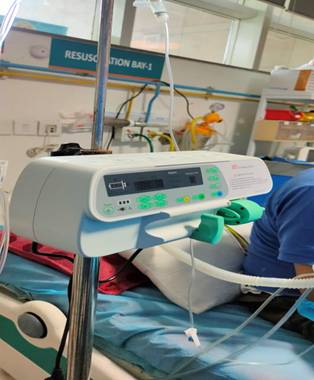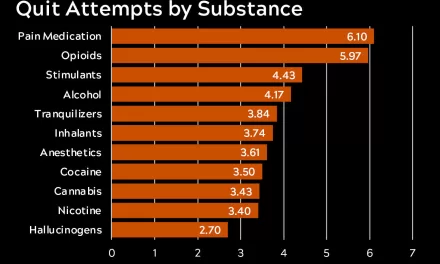A groundbreaking multifaceted intervention has significantly reduced postpartum hemorrhage (PPH) and maternal mortality (MM) in Sub-Saharan Africa (SSA), according to recent research findings. The study also strengthens evidence linking prenatal anemia with PPH, suggesting potential global implications for improving maternal health outcomes.
Maternal Mortality and the Role of PPH and Anemia
Maternal mortality rates vary widely across regions. In SSA, MM remains alarmingly high, ranging from 500 to 1000 deaths per 100,000 live births, largely due to nutritional deficiencies. In contrast, developed nations report significantly lower rates, with the U.S. ranging from 5 to 20 per 100,000 live births. However, racial disparities in MM rates persist in the U.S., as noted by the Centers for Disease Control and Prevention (CDC).
PPH, a leading cause of MM, has been strongly associated with prenatal anemia—a modifiable risk factor—based on two large-scale studies. One study, led by Dr. Annette von Drygalski, Director of the Hemophilia and Thrombosis Center at the University of California, San Diego, examined an intervention in SSA and found a strong correlation between anemia and PPH. Similar findings emerged from the World Maternal Antifibrinolytic-2 (WOMAN-2) trial, further supporting this connection.
The Intervention and Its Impact in SSA
In response to high MM rates and insufficient data on PPH incidence and risk factors, von Drygalski and colleagues conducted a study at a metropolitan hospital in Mozambique. They collected data from 8,879 consecutive deliveries between February 2019 and January 2021 to assess pre-intervention conditions.
A comprehensive intervention strategy was then implemented between October 2022 and April 2024, covering 6,087 deliveries. The strategy included:
- Cryoprecipitate production capacity
- Early massive transfusion and standardized PPH care protocol
- Single-use hemorrhage boxes
- PPH education and simulation training
The results demonstrated remarkable improvements:
- MM rates dropped from 1.10% (1104 per 100,000 live births) to 0.28% (279 per 100,000 live births).
- PPH incidence declined from 14.01% to 4.90%.
- Infant mortality improved from 3.44% to 2.59%.
Despite these advances, anemia and thrombocytopenia remained significant risk factors for PPH. Laboratory data from 13% of study participants indicated that moderate and severe anemia substantially increased the risk of PPH, with an adjusted odds ratio of 3.31. Additionally, the risk compounded in cases of concurrent thrombocytopenia.
Implications for Global Maternal Health
The findings hold significance beyond SSA, as anemia remains a concern in other regions, including the U.S. Although cases of severe iron deficiency are rare in developed nations, anemia is often underdiagnosed and its relationship to PPH may be underestimated due to limited data.
Von Drygalski emphasized that the association between anemia and PPH becomes most evident when hemoglobin levels fall below 10 g/dL, indicative of moderate or severe anemia. The extensive datasets from SSA and the WOMAN-2 trial provided the statistical power needed to confirm this link, which may have been overlooked in smaller studies elsewhere.
Improving the prevention, diagnosis, and treatment of anemia in women of reproductive age could mitigate maternal health risks globally. Von Drygalski urged increased attention to iron deficiency screening, citing findings from JAMA Network Open that revealed underdiagnosis of iron deficiency in the U.S.
“Clinicians should prioritize iron deficiency screening, particularly during pregnancy,” she advised. “Iron deficiency can lead to fatigue, poor functioning, and anemia, all of which are preventable contributors to maternal mortality.”
Future Research Directions
Despite the robust findings, the exact mechanism linking anemia and PPH remains unclear. “We believe this is related to red cell physiology, but we don’t fully understand it yet,” von Drygalski noted. Further research is necessary to explore the underlying causes and to develop targeted interventions.
Disclaimer
This article is based on findings presented at the 2024 American Society of Hematology conference and includes information from published studies. The research is ongoing, and further studies are needed to validate the findings across diverse populations. The lead researcher, Dr. Annette von Drygalski, has disclosed affiliations with multiple pharmaceutical companies, including Biomarin, Regeneron, Pfizer, Bioverativ/Sanofi, CSL-Behring, Novo Nordisk, Sparx Therapeutics, Takeda, Genentech, and Hematherix LLC. Readers should consider these disclosures when interpreting the findings.
Conclusion
The successful intervention in SSA offers a model for addressing maternal mortality worldwide. By recognizing anemia as a significant risk factor for PPH and implementing targeted interventions, maternal health outcomes can be improved globally. Increased research, screening, and prevention efforts are essential to achieving further reductions in MM and PPH across all populations.











